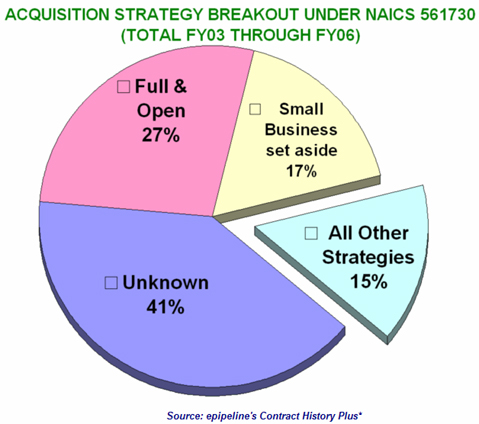
The lawn care industry is huge – larger than we ever thought before we started mowing lawns in Fairfax and Washington DC. Of course, it’s really centered in the United States. The rest of the world doesn’t care too much to pay for lawn care. Even government spending on lawn care is pretty jaw dropping. In fact, contract spending on lawn care in California exceeded $99 million last year. The second highest state was VA, with over $46 million (about half as much).
That’s an insane amount for our government to spend on contract lawn care, right?
Really, one of the craziest inefficiencies in our government is how they give out contracts.
As for who wins the contracts, it’s compartmentalized into two categories: unrestricted and restricted. The unrestricted marketplace is largely made up of, well, larger companies. The restricted marketplace is awarded under the following acquisition strategies:
- 8(a) Competed
- 8(a) Small Disadvantaged (SDB) set-aside
- 8(a) sole-source
- SDB set-aside
- SDB, 8(a) with HUBZone
- Combination HUBZone and 8(a)
- HUBZone set-aside
- HUBZone sole-source
- Service Disabled Veteran-Owned Small Business (SDVOSB) set-aside
- SDVOSB sole-source
- Emerging Small Business set-aside
- Very Small Business set-aside
- Reserved for Small Businesses ($2501 to $100,000)
- Total Small Business set-aside
That’s a lot of acquisition strategies, and quite frankly, a bit overwhelming. Just know that each of these requires its own varying degree of bureaucracy and creates quite a sludgy contracting processes.
In fact, here’s the graphic that displays which strategies the government used last year:
The 8(a) Business Development program was developed to “help small, disadvantaged businesses compete in the marketplace.” It includes a number of programs, including the HUBZone program, which further departs into categories like Service-Disabled Veteran-Owned Businesses, Small Disadvantaged Businesses, Women-Owned Businesses, and more.
So long story short, the government pays a ton of money on contractual lawn care to subsidize smaller companies or women-owned companies.
Whatever you think about these acquisition strategies, it’s always interesting to take a closer look at how the government is spending tax dollars.
Source: http://www.epipeline.com/mktng/nl-articles/naics-code-561730.html







